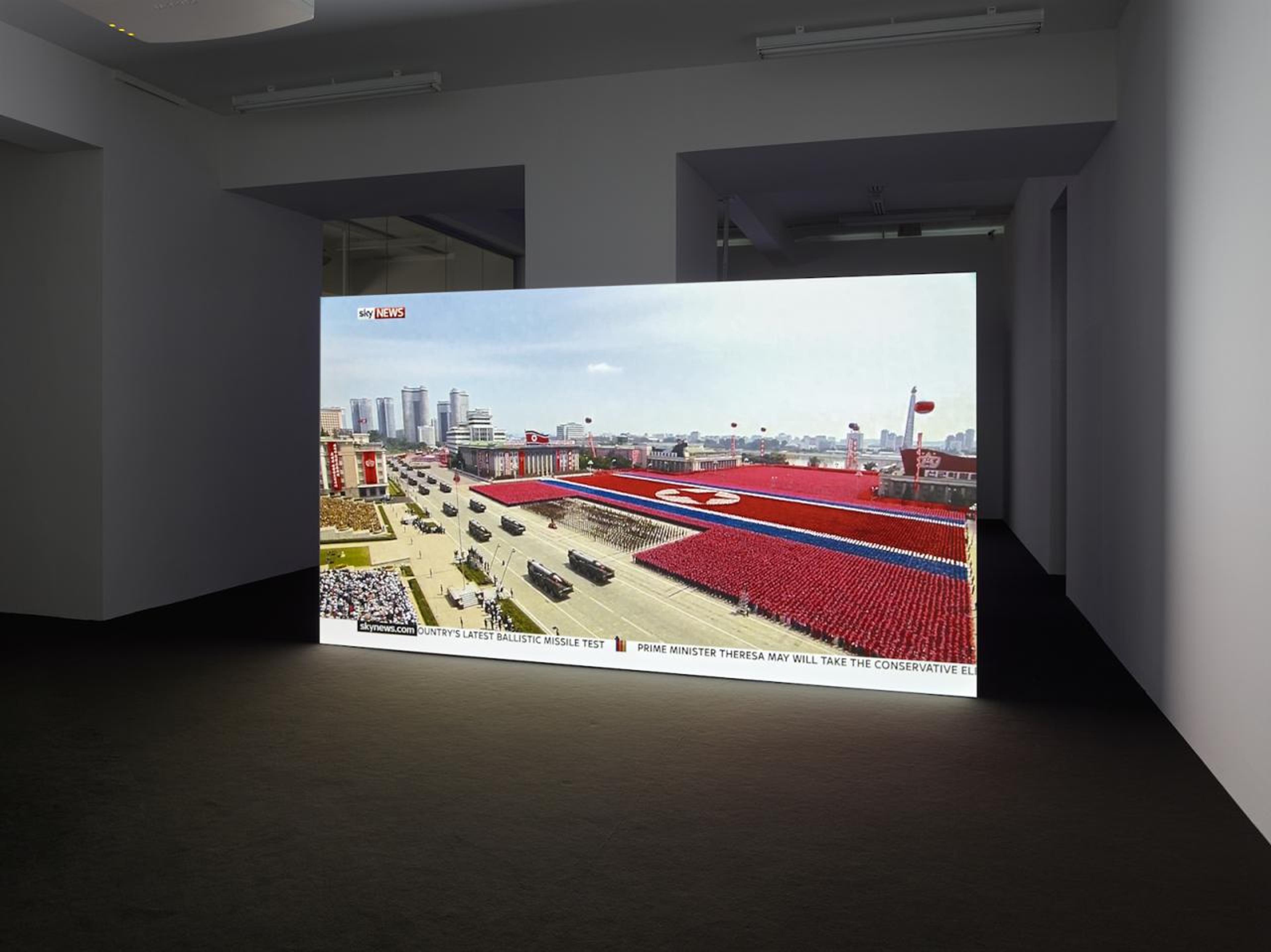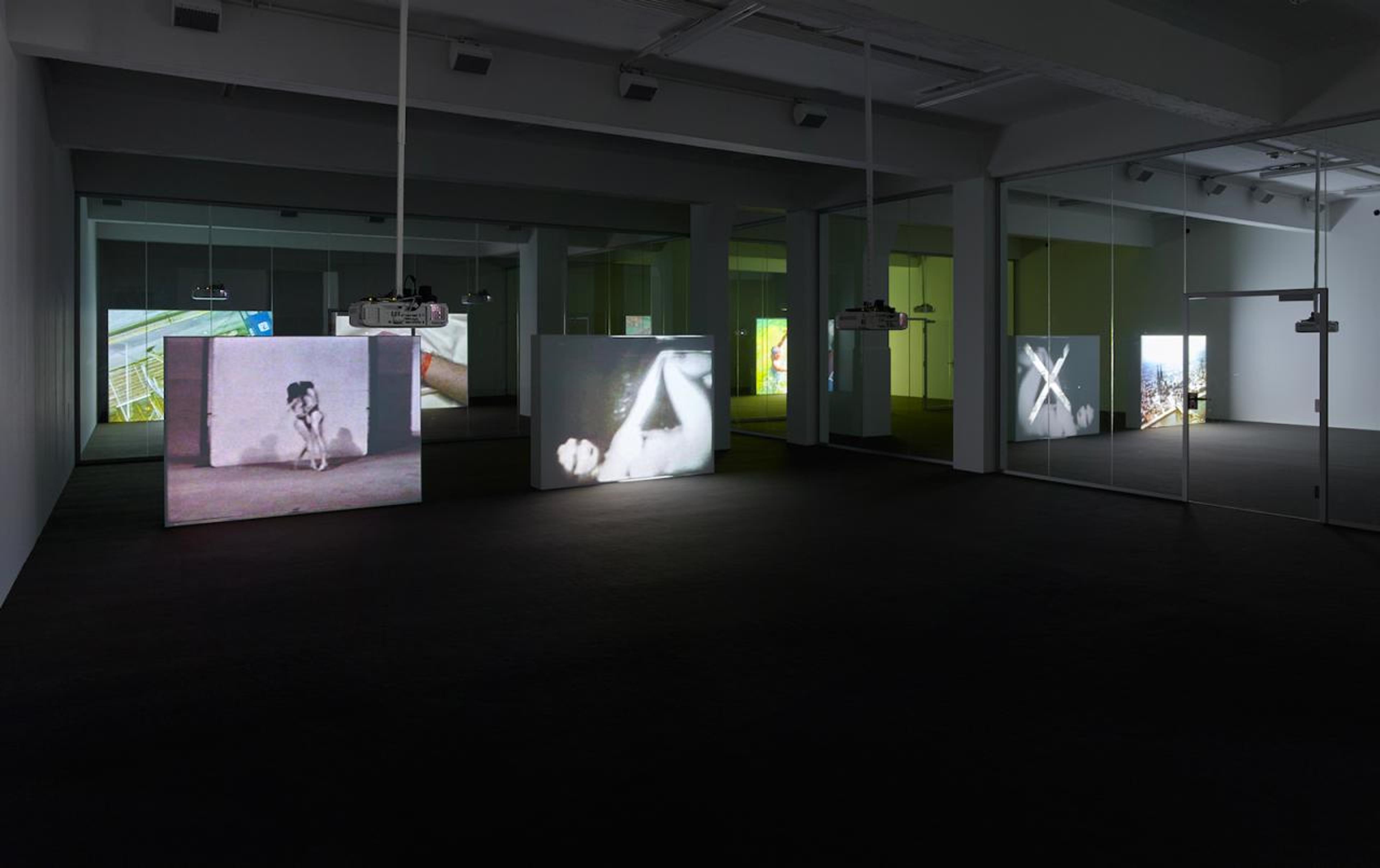A survey of the short history of video as a medium for contemporary art, “Generation Loss” marks the ten-year anniversary of the Julia Stoschek Collection. Defying the black-box model with a specially designed interior architecture with glass partition walls, it brings several generations of video artists into conversation with one another. The exhibition is curated by video artist Ed Atkins, whose own Sky News Live (2016) – a live transmission of the eponymous TV channel – is one of the first two works awaiting the visitor as they enter. He spoke to Robert Schulte about the show.
Tell me something about the loss in the exhibition’s title.
“Generation Loss” is to be understood both literally and figuratively. It’s a technical term for the progressive loss of fidelity that a file goes through in successive copying. It also conjures a kind of melancholy regarding what might be lost to the inaccuracies of apparent historicity. Or how meaning might change over time, or how intent is forgotten, or interpretative divergence might occur. It’s a term that, to me, lends itself perfectly to the particulars of the medium of artist moving image: technical incumbency with factual certitude – as in, the thing has to function within a predetermined technical structure – and its disabuse as something to be structurally corrupted for the purposes of reflection. The medium, I think, is uniquely reflexive, both necessarily and in ways that affirm the artist’s agency.
Ed Atkins & Simon Thompson Sky News Live (2016) Photo: Simon Vogel
The exhibition space is structured by glass walls creating transparent rooms that enable the visitor to look at several screenings from the same position. In the galleries the works are often paired and their sound overlaps. What’s the idea behind this way of installing the works?
Their sound seldom overlaps, actually, but you can pretty much see all of the works on a given floor at the same time. Or rather, you can see all of the sequences constituted by several works at the same time, through the glass. One of the usual practical concessions demanded by large-scale projected video works is that they be shown in isolation – such is the medium. This is a kind of practicality that hides something ideological. I wanted the works to appear as a group, together.
To get past the black box and the monolithic, cinematic clinch of watching a serious work. It’s tyrannical, akin to the white cube. The occult counterpart to the white cube’s theological redolence. I wanted to get rid of this. I also wanted to make a show, and not a suite of discrete showings of work. So all the sequences are carefully choreographed, paired, quadrupled, to hopefully conjure frictions and tensions and accords and readings and all manner of possible interpretations that are only ever possible in situations of multiplicity. It’s a collection, too. As in, a show of a collection – and here it is. Minus those works that demand more a theatre than a screen.
"Immersion isn’t simply a word from the PR of a particular bit of tech being pimped by corporate whatevers"
As a visitor you are very much surrounded but never immersed. There’s not a single virtual reality work in the exhibition, for example, which is interesting given that it has become quite common in many exhibitions that are not even focused on video…
VR is, I’d argue, entirely un-immersive. It seems like the most cumbersome, clunky, vividly artificial experience going. Immersion isn’t simply a word from the PR of a particular bit of tech being pimped by corporate whatevers. It’s more complicated, more beautiful than that. It was important in this show that every work was shown in pretty much the same way. That the show had a kind of practical fascism regarding the format of the medium – 4:3 or 16:9, with or without sound, and that’s it – that was chosen as a way to go deeper into the works themselves, and the ways in which they relate to one another. VR, in its inwardness, its fundamental isolationism, is the antithesis of this show.
Left: Ulay & Marina Abramovic Relation in Space (1976) Right: Joan Jonas Vertical Roll (1972) Photo: Simon Vogel
How do you like being an artist-curator?
It’s okay. Familiar.
What would your dream curatorial project be?
I’d like to add gratuitous Foley to silent American experimental films by men. Brakhage, Snow, Frampton. “The Act of Seeing with One’s Own Eyes” would be the title of the show, after Brakhage’s 1971 film. It’d be about how serious silence is, via a showing of silent works artificially Foley’d to a level of horrendous naturalism.
“Generation Loss: 10 Years of the Julia Stoschek Collection”
Julia Stoschek Collection Düsseldorf
10 June 2017–10 July 2018
ROBERT SCHULTE is an editor at Spike. He lives in Berlin.




